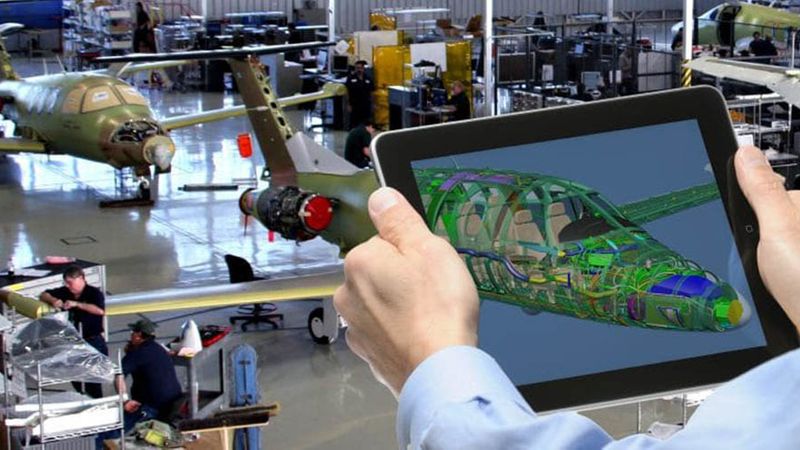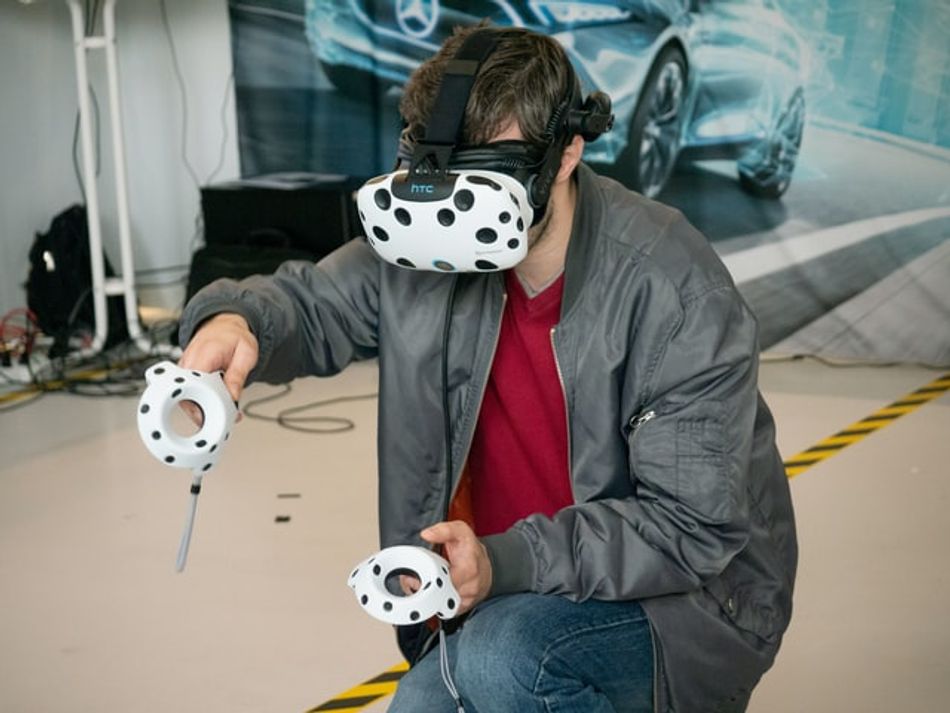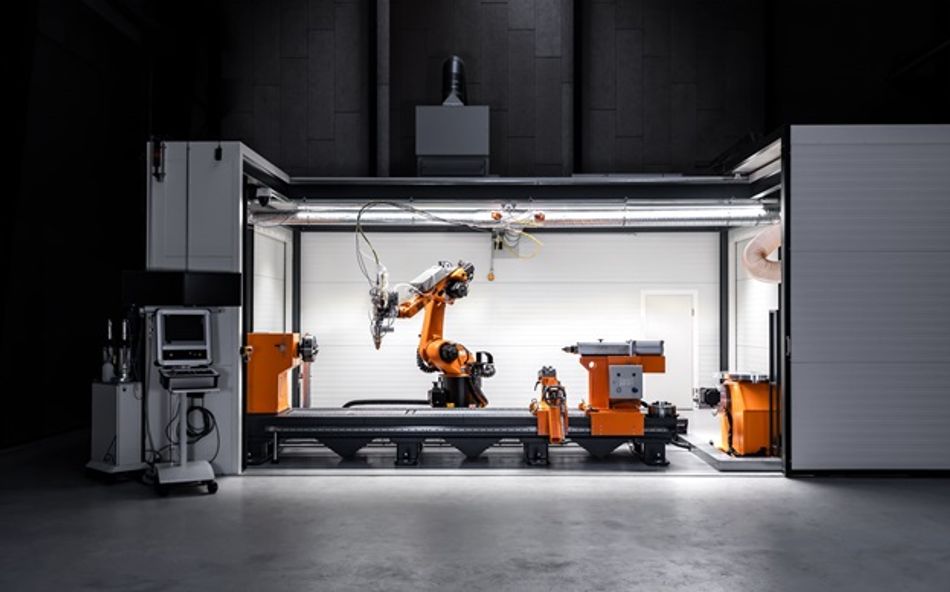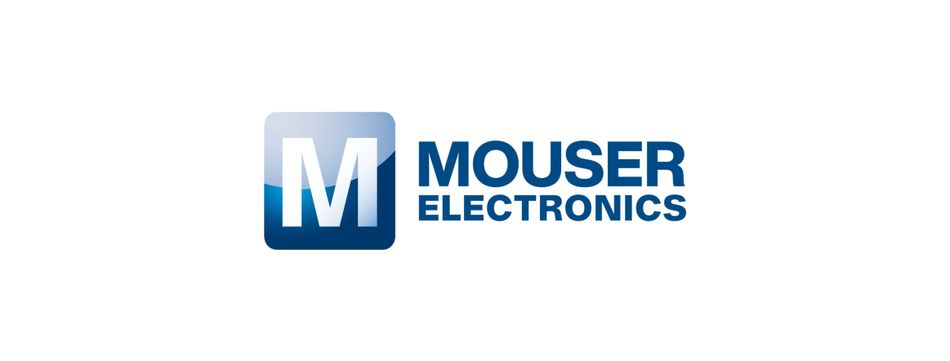New Technologies Pair the Physical with the Digital
Digital twins can help bridge the gap between the physical and virtual, but they’ll need to converge with other emerging technologies for Industry 4.0 to realize their potential.

image credit: Siemens
This is the seventh, and final article in a 7-part series examining solutions for robot control. The series looks into solutions for power, data, and signal, necessary to push the role and capabilities of industrial robots. This series is sponsored by Mouser Electronics, an online distributor of electronic components. Through their sponsorship, Mouser Electronics is dedicated to sharing knowledge about the possibility of a greener, more reliable, and better-connected manufacturing future.
At the heart of Industry 4.0 is the intersection of the physical and digital worlds. In order to realize the promise of Industry 4.0, a wide range of technologies must be integrated to pair the physical domain with the digital information domain. This is where digital twin technology comes into play.
Digital twinning seeks to improve the design and maintenance of physical systems by offering data-driven ways to map these physical systems onto digital and computerized replicas of themselves, which are known as their Digital Twin (DT). Lessons learned in the virtual environment can be used to improve the physical.
With the arrival of automation and rapid data exchange, digital twinning could be useful in a myriad of industrial applications. But digital twinning is only part of the technology roadmap for the broader change that is known as Industry 4.0. In order for the digital twinning technology to manifest its potential, it relies on converging with a range of other new technologies.
Pairing technologies
Cyber-physical systems
Augmented, virtual, and mixed reality
Artificial intelligence
Additive manufacturing 3D printing
Digital thread
In this article, we’ll look at how these technologies can help digital twins bridge the gap between the physical and digital in Industry 4.0.
Pairing Technologies
Pairing technologies are critical to digital twinning and the world of Industry 4.0, as these technologies empower a device or system to find, connect, and communicate with other devices and systems. For example, sensors and Industrial Internet of Things (IIoT) products require the ability to find and connect with other devices successfully. Technologies such as Bluetooth®, among others, are employed to make these connections. To accomplish this, connected devices must be able to interrogate other potentially connectable devices successfully. When querying other devices, units must be able to ascertain whether or not they are communicating with a unit that they should be corresponding and exchanging data with. When properly enabled and successful, this accomplishment is called pairing.
Security issues are paramount. Every device should pair only after proper identification has been confirmed to avoid crosstalk or misinformation. Algorithms that allow the devices to quickly and easily identify other units that they should pair with are a critical step to automating this process. Pairing is then accomplished through authentication keys employing a secure cryptographic scheme. Pairing works to ensure that the connections stay bonded in a data-exchanging relationship between devices and works to prevent an external source from prying into their data exchanges.
Since flexibility is paramount, units must be able to make and break their pairing quickly and without external human involvement. Successful pairing may require ongoing communication to keep the pairing active. If one of the units determines that the pairing bond is no longer relevant to its successful operational objectives, it will remove its pairing relationship and present itself available for a different pairing opportunity.
Cyber-Physical Systems
The National Science Foundation (NSF) defines cyber-physical systems (CPS) as “the tight conjoining of and coordination between computational and physical resources.” The critical element in this definition is that it focuses on a system approach—where a set of connected things or parts form a complex whole.
A current example of a CPS is an automated airline flight-control system. Industry 4.0 requires traffic control, not for airplanes, but for the machines, computers, robots, sensors, and processes that comprehensively work together for its realization. It represents a system of higher-order than IIoT because it sits one level higher in the complexity chain. Where IIoT is concerned with collecting, handling, and sharing of large amounts of data, CPS focuses on ensuring that this enormous amount of data, collected from multiple systems, gets properly utilized across various disciplines that are relevant to the industry involved. The unique dilemmas of any given enterprise will require engineering expertise to address these specific challenges.
Augmented, Virtual, and Mixed Reality
Augmented reality technologies are providing us with the ability to overlay digital content onto our actual physical environment, merging the real with the virtual and creating a mixed reality. This allows engineers to view things in new ways. For example, rather than seeing a digital twin on a computer monitor, we could observe it using an augmented reality (AR) headset that enables the users to engage with digital content or interact with holograms.
The use of such AR empowers viewers to have an immersive experience where they engage their bodily senses. Reality-enhancing headsets can create real-time experiences of actual conditions happening in the physical world, by way of experiencing them through a digitized environment. AR could lead to new insights and understandings. Additionally, a digital twin display could appear in the user’s field of view, making real-time feedback that much more accessible and easy to use.

Artificial Intelligence Technologies
IIoT offers the promise to provide connected data; therefore, useful data must be stored and analyzed. Artificial intelligence (AI) is a solution for analyzing and successfully handling large amounts of digital data. It empowers the realization of digital twinning by enabling rapid integration, hybrid integration, investment leverage, and system management and compliance.
Machine learning offers the opportunity to use digital data to model, analyze, train, apply, and infer how best to make decisions. AI is helping to change the traditional perspective of computing, moving it beyond what primarily has been an automating- and scaling-process perspective towards a knowledge-based perspective via actionable insights. Soon, it will help engineers gather new ideas and ways to create value. By using a data-science approach, rapidly powered decisions will enable the generation of further opportunities.
Additive Manufacturing
Additive manufacturing (AM) is a method of production in which 3D objects are built by adding layer-upon-layer of material. AM holds promise because it leads to industries that can address variable demand and produce products that are distributable and flexible. Two areas of AM—3D printing and digital thread—are advancing to make digital twinning possible.
3D Printing
3D printing is perhaps the most well-known example of AM. In 3D printing, a printer is programmed to print an object using plastics, metals, or other custom materials with virtually zero lead-time. 3D printing is extremely flexible and eliminates the issues involved in producing objects with significant economies of scale. What this means for the future is that you will be able to get what you want quickly—as if walking up to the fast-food counter.

Digital Thread
With complex systems, however, AM has been confined primarily to the laboratory because all the systems involved do not operate under a unified system and, thus, are hard to scale. Digital thread promises to change that.
A digital thread is a single, seamless strand of data that acts as the constant behind a data-driven digital system. It activates the potential of AM by allowing a unification of disparate applications by way of their adherence to the thread, which is their source of shared information. A digital thread creates an easier process for collecting, managing, and analyzing data from every location involved in the redesigned Industry 4.0. It enables a better and more efficient design, production, and utilization throughout the entire process.
Conclusion
Digital twinning will be a hallmark of Industry 4.0, helping to increase gains, efficiencies, and flexibility for existing products and processes. But digital twinning is just one part of the Industry 4.0 road map. Pairing technologies, CPS, AI, and AM are key to seamlessly bringing together the physical realm and the realm of its DT information and insights. While these technologies are bringing their complexities into the digital twinning equation, ultimately, they promise to enable Industry 4.0 to manifest its potential.
This article was initially published by Mouser and TE in an e-magazine. It has been substantially edited by the Wevolver team and robotics writer Dillon Garrison. It's the seventh article of a 7-part series exploring solutions for robot control. Future articles provide an overview of servo motor connections, discuss the role of digital twins in robot connectivity and look at trends in manufacturing automation.
Article one looked at gains made by improved connectivity in industrial settings.
Article two surveyed the quality of connectors for harsh environments.
Article three provided an overview of common motor types.
Article four explored connectivity solutions for industrial robotic applications.
Article five discussed the impact of cobots on industrial automation.
Article six examined 6 key connectors for automation.
About the sponsor: Mouser Electronics
Mouser Electronics is a worldwide leading authorized distributor of semiconductors and electronic components for over 1,100 manufacturer brands. They specialize in the rapid introduction of new products and technologies for design engineers and buyers. Their extensive product offering includes semiconductors, interconnects, passives, and electromechanical components.
